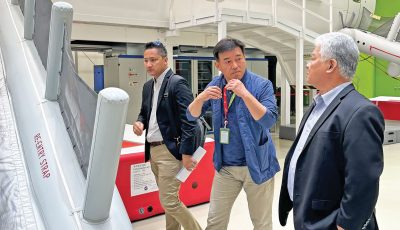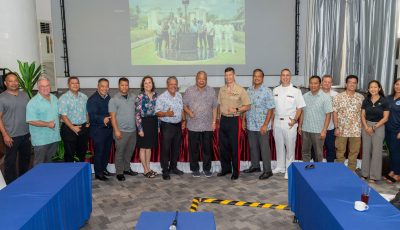More militarization across the region
The United States continues to research, develop, test, design, purchase, receive, and operationalize as many weapons systems and platforms that can have real and devastating impacts if used in war against China, Russia, or North Korea. At the same time, China continues to do the same, growing its space, information, naval and land-based forces to prevent the U.S. from fully accessing its near seas region in a hotly contested environment.
Preparation and practice for war has and continues to have wide-ranging consequences. Japan, Australia, Singapore, the Philippines, Thailand, Vietnam, and Taiwan benefit at many levels from receiving military support from the United States. Guam, the Marianas, and Micronesia have received some benefits from the additional militarization of the region, but it has and continues to come at a tremendous environmental, political and Chamorro human resource corridor cost.
Micronesia is already the central location of the single largest all-purpose American military training area in the entire planet and there are no indicators that this is expected to slow down.
The American military presence in the western Pacific and Asia has brought about general peace and helped to sustain order for most of the past several decades. On the flip side, American military operations and presence have also created the conditions that make the rise of China incompatible with American military interests. Improving the distances that missiles can go, modernizing America’s total nuclear arsenal, and building radar systems in Micronesia point to a dangerous future.
The problem is over time, the United States simply cannot be everything to everybody. Should hot war ensue, the people and populations that will receive the brunt of destruction will be located throughout the Asiatic and western Pacific region.
Why it won’t bring about lasting peace and trust
The cost to the U.S. with continuing to sponsor the world’s largest armed services budget is frankly unsustainable. America now has a massive record of deficit spending, total government issued debt outstanding, and the continual practice of printing money electronically does not guarantee future peace in the western Pacific and Asia.
Military arms races into space, information and unmanned systems, undersea warfare, missile technology, and electronic espionage will not bring lasting trust. Hypersonic weapons testing by the U.S., China, the Koreas, and Japan reflect the lack of geopolitical trust currently seen in our region.
Should a hot war break out, it could cause historic disruptions to worldwide trade and commerce.
China and Russia grow military cooperation in the western Pacific
Russian and Chinese navies are now working together to practice for war in the western Pacific. Both nations are involved in practicing more effective military communications, how to shoot down airplanes, how to detect and destroy submarines and how to neutralize mines placed in the ocean. This is taking place in part because China and Russia view that they have common core interests in the western Pacific. Russia and China also find benefit by working together militarily to offset American influence. The Chinese and Russians are taking out military insurance policies in our region, as are the U.S. and its allies.
Russia and China are working to fully operationalize nuclear-powered unmanned undersea weapons that carry nuclear warheads. Both nations are working on hypersonic speed platform weapons for use in the airspace domain. America is doing similar things, but the main distinguishing factor behind American actions are that U.S. nuclear weapons inventories are already approximately 10 times the size of China’s nuclear weapons arsenals and America is looking to a future that incorporates the use of smaller nuclear warheads in war.
Meanwhile American civilian diplomacy has fallen to the wayside
Guam and the Northern Mariana Islands remain invaluable military and intelligence colonies of the United States. State Department needs and Department of the Interior needs for our island chain pale in comparison to the perceived value of Guam to the Pentagon.
Civilian diplomatic efforts undertaken by Washington continue to take a back seat to military wants and needs in our region. Navy admirals and general officers are the modern-day principal diplomats without the formal training in this field. It is hardly an American diplomatic success to link U.S. Japanese military cooperation on long-range cruise missile enhancements and U.S. South Korean ballistic missile enhancements as tools that bring about lasting trust and peace.
It simply isn’t so.
In addition, American moves to convert ship-based anti-air missiles from defensive to offensive weapons, and Chinese beliefs that they will not be able to successfully launch a second nuclear missile strike against U.S. targets, do nothing to generate more trust and greater cooperation that more traditional diplomatic measures can bring about.
Let’s hope that the American, Chinese, North Korean and U.S. allied militaries don’t mess this one up.



























